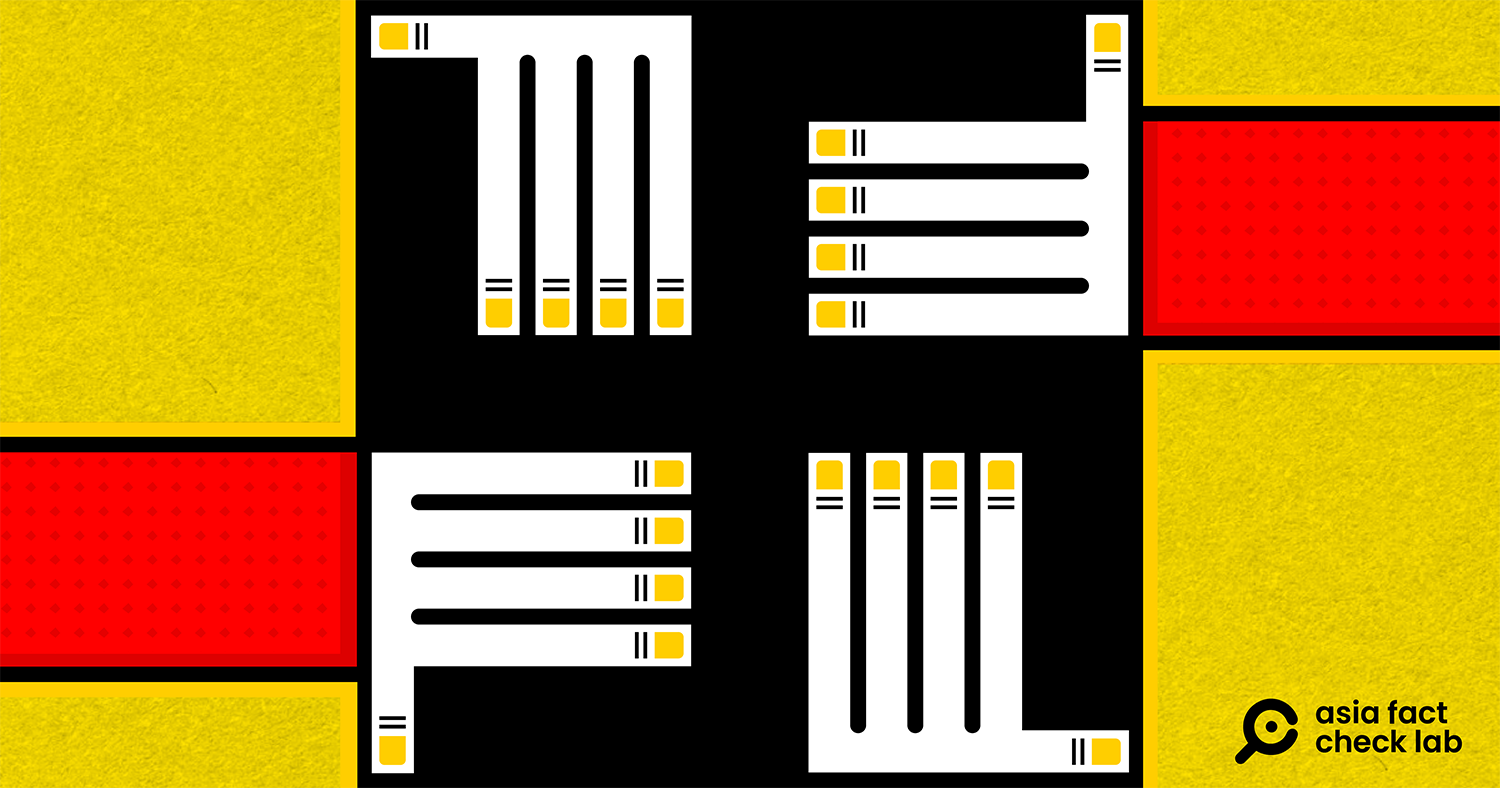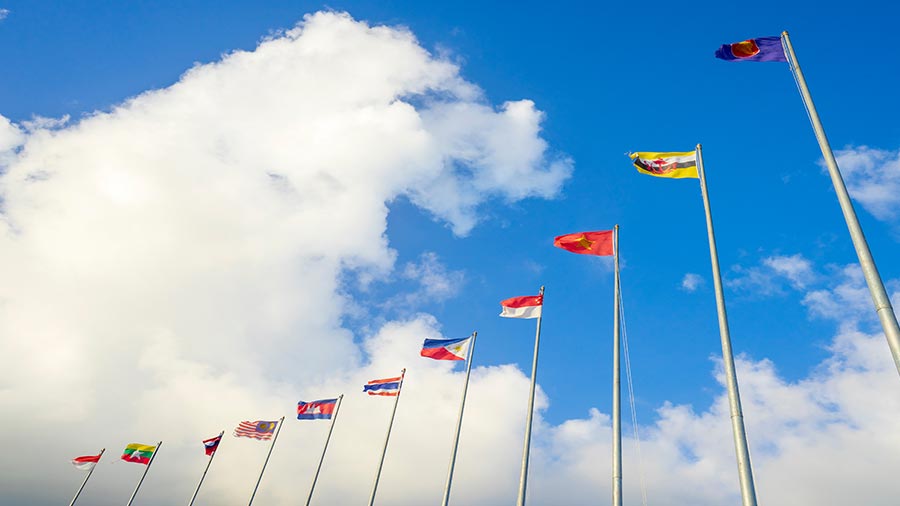China
Did the German Embassy in China ban a Buddhist religious symbol?

A claim has been repeatedly shared among Chinese-language social media users that the German Embassy in Beijing has “insulted” Chinese citizens by “banning” the use of the Buddhist religious symbol, also known as a swastika, on one of its social media posts.
However, the claim is false. Germany’s foreign ministry told AFCL that its post was to condemn some online users who inappropriately used the symbol to glorify the Nazi regime – which used the symbol – or combined it with the Israeli flag.
The swastika is an ancient symbol that has been used in many different cultures, not just as a symbol for Buddhism.
The claim was shared here on Weibo, China’s popular social media platform, on Oct. 25.
“Germany insulted Chinese online users with its official Weibo post. It banned the manja [the swastika]. The German Embassy must apologize!” reads the claim in part.
A number of Chinese internet personalities and legal bloggers later derided the embassy’s announcement as inappropriate for using foul language and mistaken in its use of the upright version of the swastika, insisting that Buddhist uses of the symbol were always upright, while Nazi was always tilted.
German expressions of support for Israel following the outbreak of the Israel-Hamas war has caused Chinese netizens to leave disparaging comments on the German Embassy official social media accounts, including pictures of an Israeli flag combined with a swastika.
In response, the German Embassy in China urged Chinese online users on Oct. 24 to avoid glorifying Nazism, posting an image of the Swastika with a red cross mark on it.
The identical claim was shared in other Chinese social media posts that also claimed that the photo released by the German Embassy shows an upright swastika, which solely symbolizes Buddhism, unlike the tilted swastika used by the Nazis.

However, the claim is false.
The swastika
The swastika is an ancient symbol that has been used in many different cultures going back at least 5,000 years. To this day, it is a sacred symbol in Hinduism, Buddhism, Jainism and Odinism.
The symbol took on a variety of meanings throughout history before being chosen by Adolf Hitler as a symbol of National Socialism.
While this was the most infamous appropriation of the symbol, the swastika was also used on the flags of many other radical far-right political parties from the early 20th century.
It is true that most Nazi flags feature tilted swastikas, but historical photos of others such as the personal standard of Hitler and the flag used by his personal bodyguards clearly show the symbol in an upright position.


‘Not a ban for Chinese online users’
Keyword searches found no official statements or credible reports to show that the German Embassy banned Chinese online users from using the swastika.
Use of the swastika in Germany, regardless of its position, is prohibited by law due to its use by the Nazis and its clear anti-Semitic connotations, according to a spokesperson for Germany’s Federal Foreign Office.
The spokesperson told AFCL that its Weibo post was designed to “condemn posts by some users who inappropriately used this symbol to glorify the Nazi regime or combined it with the Israeli flag.”
Translated by Shen Ke. Edited by Taejun Kang and Malcolm Foster.
Asia Fact Check Lab (AFCL) is a branch of RFA established to counter disinformation in today’s complex media environment. Our journalists publish both daily and special reports that aim to sharpen and deepen our readers’ understanding of public issues.
Read the rest of this article here >>> Did the German Embassy in China ban a Buddhist religious symbol?
Business
Gordonstoun Severs Connections with Business Led by Individual Accused of Espionage for China

Gordonstoun school severed ties with Hampton Group over espionage allegations against chairman Yang Tengbo. He denies involvement and claims to be a victim of political tensions between the UK and China.
Allegations Lead to School’s Decision
Gordonstoun School in Moray has cut ties with Hampton Group International after serious allegations surfaced regarding its chairman, Yang Tengbo, who is accused of being a spy for the Chinese government. Known by the alias "H6," Mr. Tengbo was involved in a deal that aimed to establish five new schools in China affiliated with Gordonstoun. However, the recent allegations compelled the school to terminate their agreement.
Public Denial and Legal Action
In response to the spying claims, Mr. Tengbo publicly revealed his identity, asserting that he has committed no wrongdoing. A close associate of Prince Andrew and a former Gordonstoun student himself, Mr. Tengbo has strenuously denied the accusations, stating that he is a target of the escalating tensions between the UK and China. He has claimed that his mistreatment is politically motivated.
Immigration Challenges and Legal Responses
Yang Tengbo, also known as Chris Yang, has faced additional challenges regarding his immigration status in the UK. After losing an appeal against a ban enacted last year, he reiterated his innocence, condemning media speculation while emphasizing his commitment to clear his name. Gordonstoun, on its part, stated its inability to divulge further details due to legal constraints.
Source : Gordonstoun cuts ties with business chaired by man accused of spying for China
Business
China Dismantles Prominent Uyghur Business Landmark in Xinjiang – Shia Waves

The Chinese government demolished the Rebiya Kadeer Trade Center in Xinjiang, affecting Uyghur culture and commerce, prompting criticism from activists amid concerns over cultural erasure and human rights violations.
Demolition of a Cultural Landmark
The Chinese government recently demolished the Rebiya Kadeer Trade Center in Urumqi, Xinjiang, a vital hub for Uyghur culture and commerce, as reported by VOA. This center, once inhabited by more than 800 predominantly Uyghur-owned businesses, has been deserted since 2009. Authorities forcibly ordered local business owners to vacate the premises before proceeding with the demolition, which took place without any public notice.
Condemnation from Activists
Uyghur rights activists have condemned this demolition, perceiving it as part of China’s broader strategy to undermine Uyghur identity and heritage. The event has sparked heightened international concern regarding China’s policies in Xinjiang, which have been characterized by allegations of mass detentions and cultural suppression, prompting claims of crimes against humanity.
Rebiya Kadeer’s Response
Rebiya Kadeer, the center’s namesake and a notable Uyghur rights advocate, criticized the demolition as a deliberate attempt to erase her legacy. Kadeer, who has been living in exile in the U.S. since her release from imprisonment in 2005, continues to advocate for Uyghur rights. She has expressed that her family members have suffered persecution due to her activism, while the Chinese government has yet to comment on the legal ramifications of the demolition.
Source : China Demolishes Uyghur Business Landmark in Xinjiang – Shia Waves
China
China Expands Nationwide Private Pension Scheme After Two-Year Pilot Program

China’s private pension scheme, previously piloted in 36 cities, will roll out nationwide on December 15, 2024, enabling workers to open tax-deferred accounts. The initiative aims to enhance retirement savings, address aging population challenges, and stimulate financial sector growth.
After a two-year pilot program, China has officially expanded its private pension scheme nationwide. Starting December 15, 2024, workers covered by urban employee basic pension insurance or urban-rural resident basic pension insurance across the country can participate in this supplementary pension scheme. This nationwide rollout represents a significant milestone in China’s efforts to build a comprehensive pension system, addressing the challenges of a rapidly aging population.
On December 12, 2024, the Ministry of Human Resources and Social Security, together with four other departments including the Ministry of Finance, the State Taxation Administration, the Financial Regulatory Administration, and the China Securities Regulatory Commission, announced the nationwide implementation of China’s private pension scheme effective December 15, 2024. The initiative extends eligibility to all workers enrolled in urban employee basic pension insurance or urban-rural resident basic pension insurance.
A notable development is the expansion of tax incentives for private pensions, previously limited to pilot cities, to a national scale. Participants can now enjoy these benefits across China, with government agencies collaborating to ensure seamless implementation and to encourage broad participation through these enhanced incentives.
China first introduced its private pension scheme in November 2022 as a pilot program covering 36 cities and regions, including major hubs like Beijing, Shanghai, Guangzhou, Xi’an, and Chengdu. Under the program, individuals were allowed to open tax-deferred private pension accounts, contributing up to RMB 12,000 (approximately $1,654) annually to invest in a range of retirement products such as bank deposits, mutual funds, commercial pension insurance, and wealth management products.
Read more about China’s private pension pilot program launched two years ago: China Officially Launches New Private Pension Scheme – Who Can Take Part?
The nationwide implementation underscores the Chinese government’s commitment to addressing demographic challenges and promoting economic resilience. By providing tax advantages and expanding access, the scheme aims to incentivize long-term savings and foster greater participation in personal retirement planning.
The reform is expected to catalyze growth in China’s financial and insurance sectors while offering individuals a reliable mechanism to enhance their retirement security.
| This article was first published by China Briefing , which is produced by Dezan Shira & Associates. The firm assists foreign investors throughout Asia from offices across the world, including in in China, Hong Kong, Vietnam, Singapore, and India . Readers may write to info@dezshira.com for more support. |
Read the rest of the original article.






